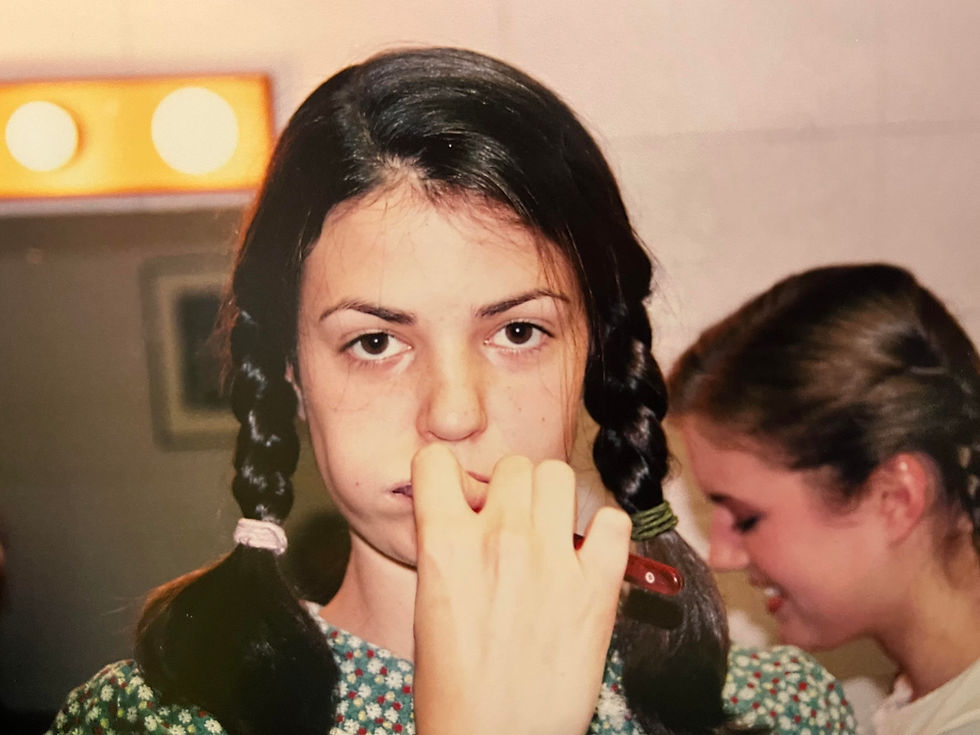Dancer
- ofccommitteeof100
- Mar 10, 2024
- 3 min read
By Elizabeth Crowell Taylor

The author brushing her teeth backstage before a show at the Ozark Folk Center circa 2006
There it was in my mailbox. My first paycheck for $23.50. It was a real REAL check–my full name printed on official bank paper with the seal of Arkansas and unfamiliar perforated strips that reminded me of the edges of the continuous printer paper of the past.
The checks came all spring, summer, and fall the year I was fifteen. More than once, I almost ripped a check apart in my excitement and awkward fumbling with the strange paper that had sticky tabs and perforated edges. I cashed a few checks, but ultimately decided that I should save them up. Mom always said saving was important! So I started keeping the official, uncashed, evidence of my first job in an empty cardboard candy box that lived in the bottom drawer of my dresser. Then I could have a big payday when I finally cashed them all at once.
I couldn’t drive myself to my first real job, so each night I worked, Mom dropped me off at the top of the big hill by the auditorium of the Ozark Folk Center, called simply “The Folk Center” or just “The Center,” by all the adults in my life. We only used its full Christian name if we were talking about the Center out of town or talking to tourists who were unfamiliar with this unusual state park which played such a central role in my childhood.
My job at the evening Folk Center music shows–which used to happen several days a week, every week, throughout the whole season–was as a traditional dancer, emphasis on the traditional. It was really hard to explain to people what exactly that meant. “Dancer? DANCER? Folk dancer! Haha! That’s even better!” people would crow as they looked at me like some hillbilly alien child. I blushed and rolled my eyes and told them that my job was to square dance, jig dance, and waltz at traditional folk music shows at Arkansas’s only living history state park.
The real clincher was telling people that I performed all this dancing at the Folk Center music shows while wearing pre-1940 era clothing. The costumes were from before 1940 because the Second World War, which the United States joined the following year, brought unprecedented technology and change to America, even the sticks of Arkansas. “Huh. Whaddya know.” was a common response to my logical explanation. At that point, people decided I was either a young woman who really loved costumes or that I was a hopeless history nerd. Both were true.
Regardless of the skepticism I sometimes faced when explaining my first real job, I loved working at the Folk Center. I was a teenager, so, yes, part of me wished I was a little cooler than a fifteen year old girl with an above average interest in history, but I liked the haunting, melancholy folk tunes. I liked the feeling of show attendees marveling at the old fashioned dresses my mom expertly sewed. I liked that I understood the secret language of the square dance callers and knew the difference between a two-step and a waltz. I liked that every time I got out of the sliding door of my family’s silver Dodge Caravan at the top of the big Folk Center hill, I felt like I belonged.
Comments